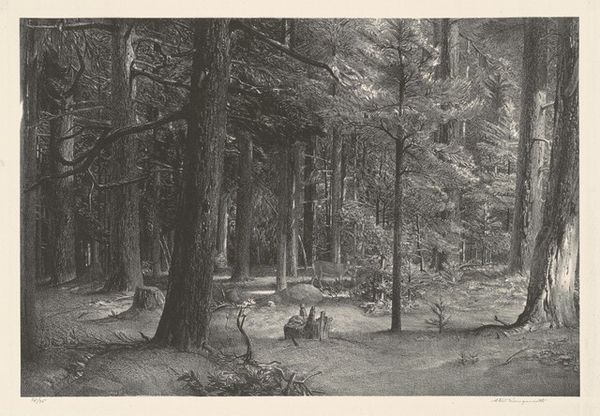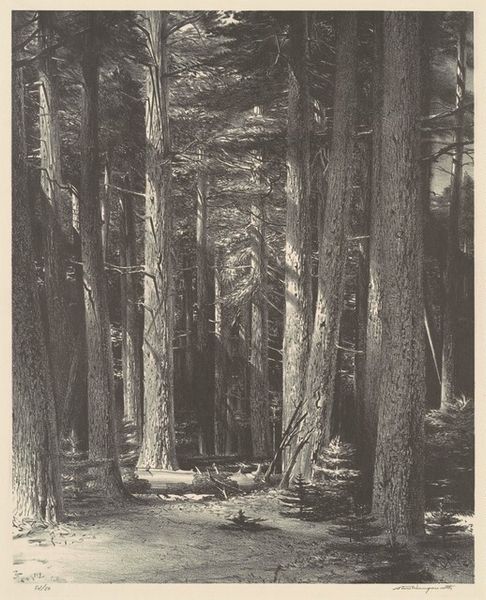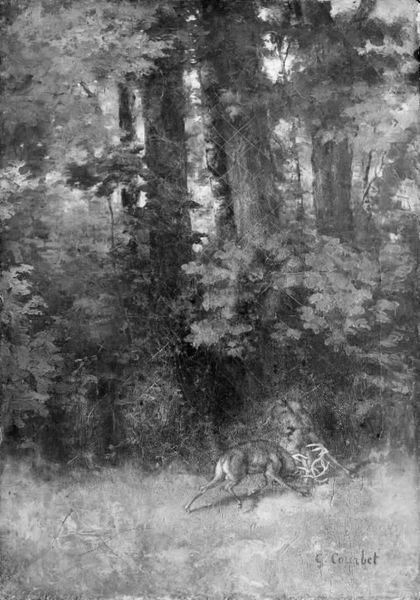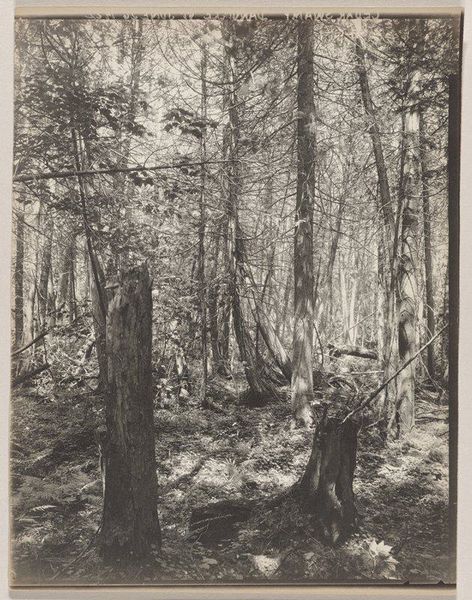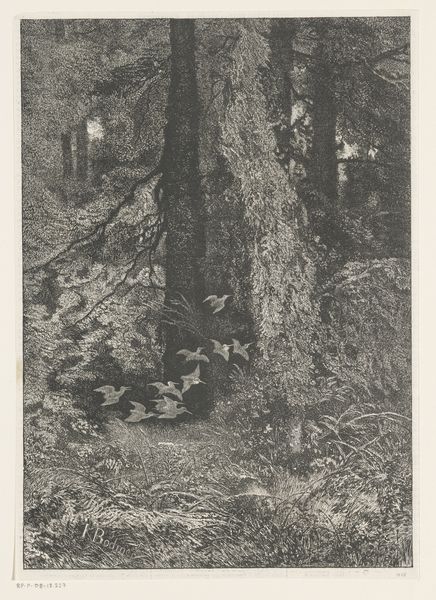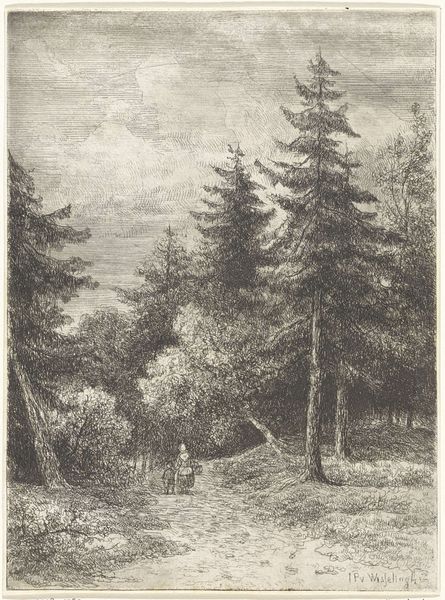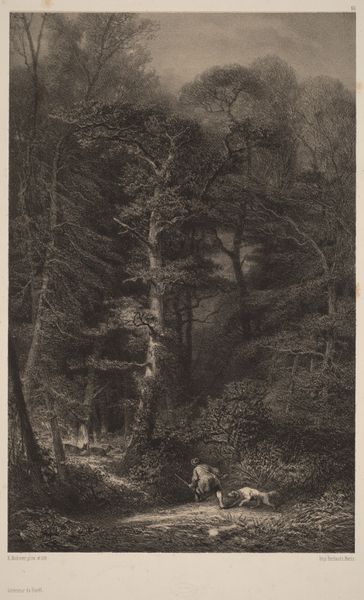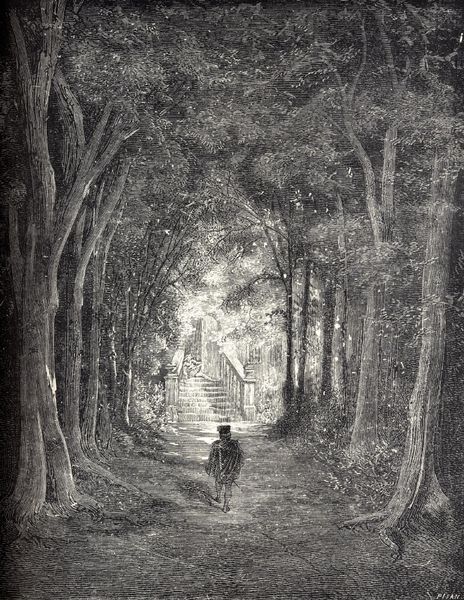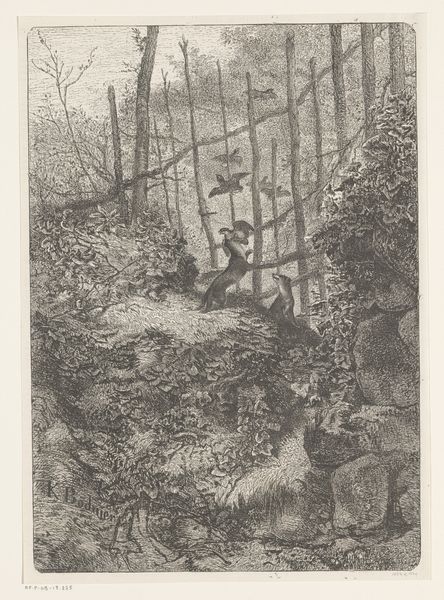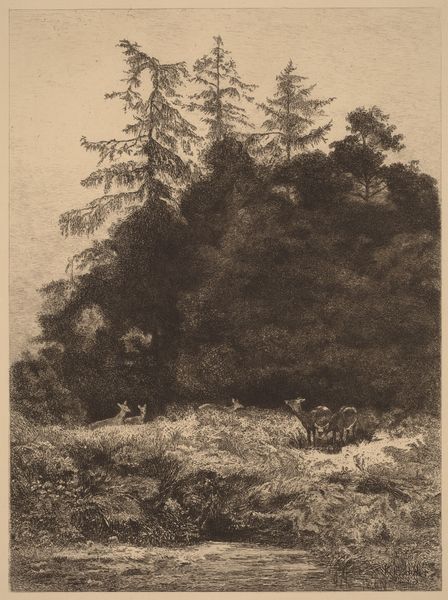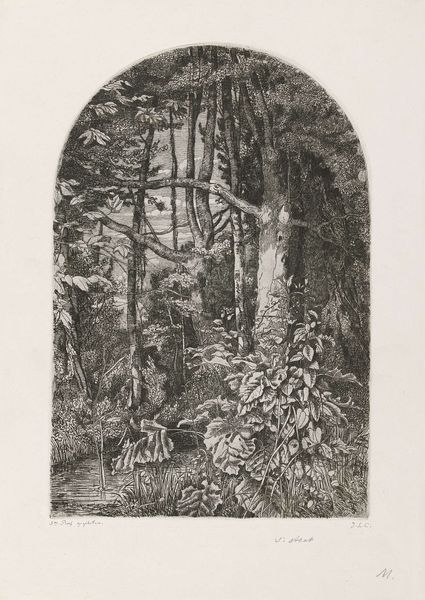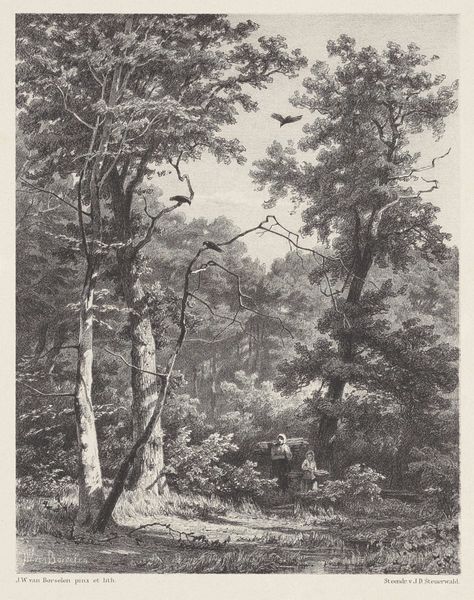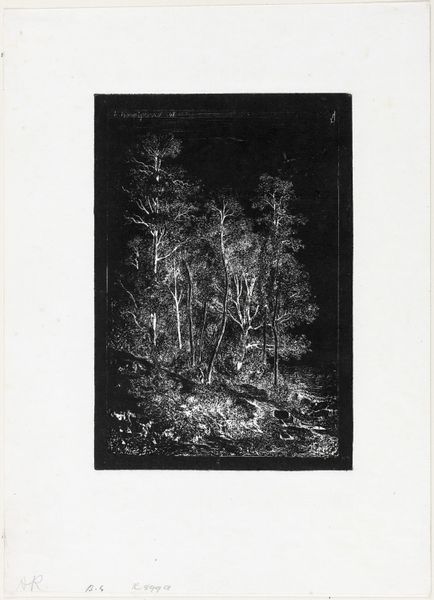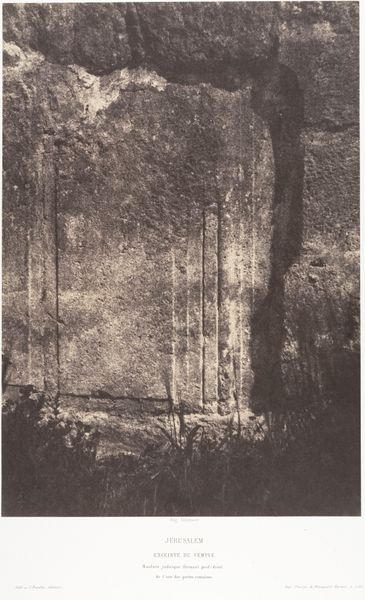
woodcut
#
tree
#
narrative-art
#
landscape
#
forest
#
romanticism
#
woodcut
#
men
#
monochrome
Copyright: Public domain
Editor: Right now, we're looking at "Hop-o'-My-Thumb," a woodcut by Gustave Doré. The forest setting is incredibly dense and a little spooky. The light struggles to penetrate. A small boy leads a larger group deeper into the woods. What’s your take on what’s happening here? Curator: Doré was a master of illustration, and his images were immensely popular. Looking at this image from a historical perspective, we see how fairy tales played a powerful role in shaping cultural anxieties and moral instruction. The setting and its relation to those anxieties and instructions is important. Editor: Anxieties? Curator: Yes. The dark forest, so prominent in fairy tales like this, represents the unknown, societal dangers, and a potential deviation from acceptable social behavior. What do you notice about who is leading and who is following in the print? Editor: The small boy is at the front, and the adults lumber behind. Curator: Precisely. What does it suggest when a child is the guide? How might viewers in Doré's time have understood this image? Editor: Perhaps it's a critique of adults losing their way or their failure to protect their children. The tale is definitely about social commentary, survival in poverty, the dangers of abandoning children, all pretty heavy stuff when you consider Doré’s massive audience via books and prints. Curator: Exactly. Doré uses the fairy tale as a vehicle to expose difficult societal realities. The image is then more than just an illustration. It’s an entry point to discuss social inequalities. Editor: I see it. Looking at Doré through a wider lens really changes how you interpret a seemingly simple illustration! Curator: Absolutely. Examining the social role of art enriches our understanding and elevates the conversation.
Comments
No comments
Be the first to comment and join the conversation on the ultimate creative platform.
